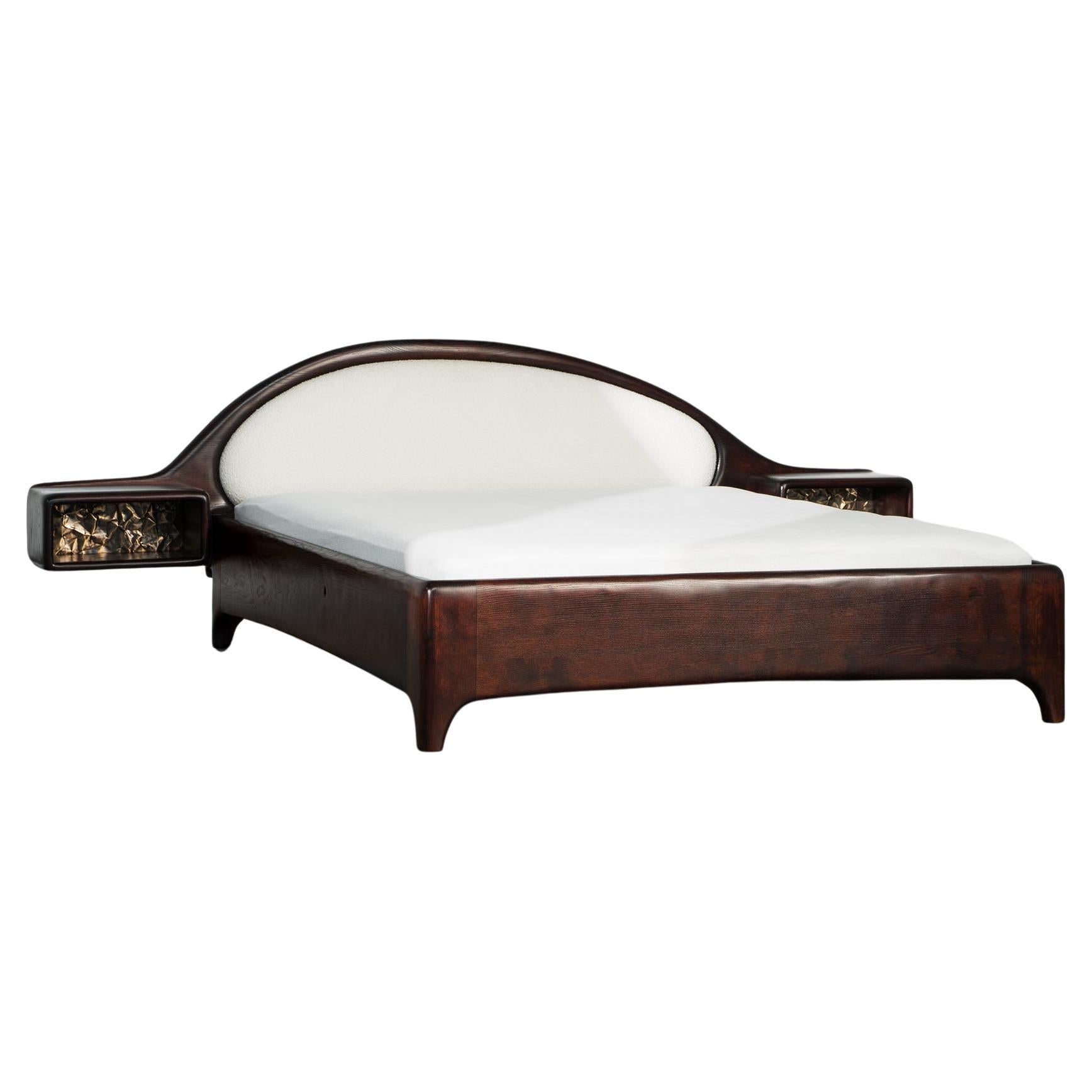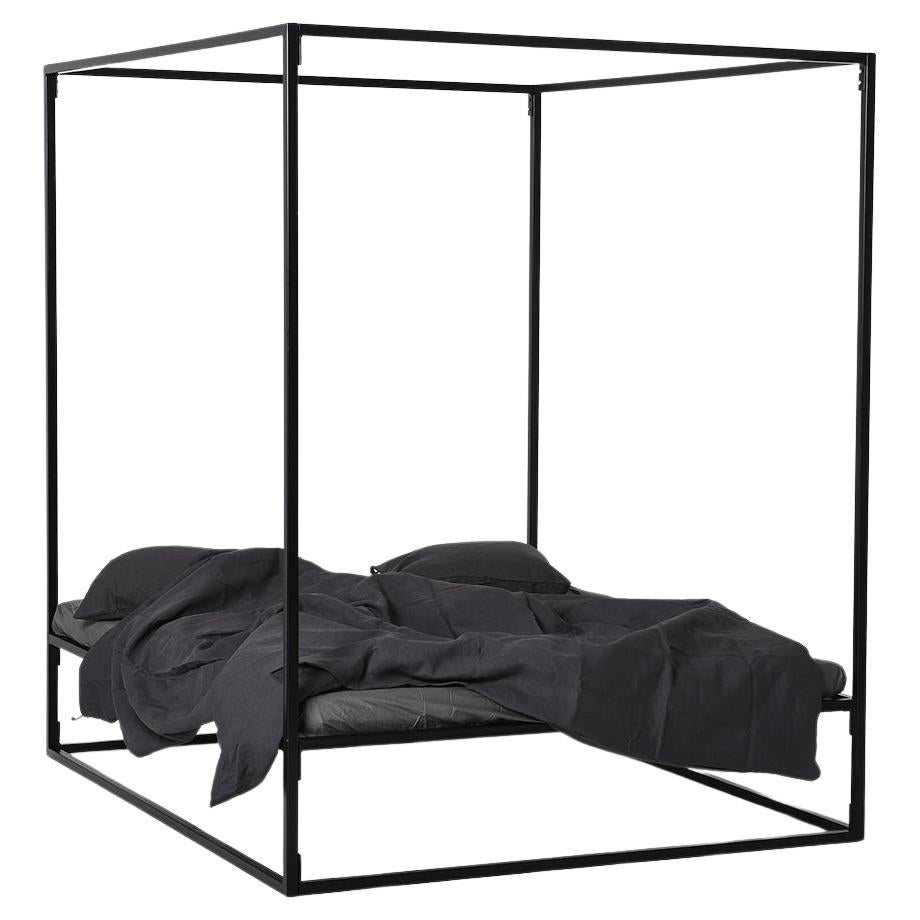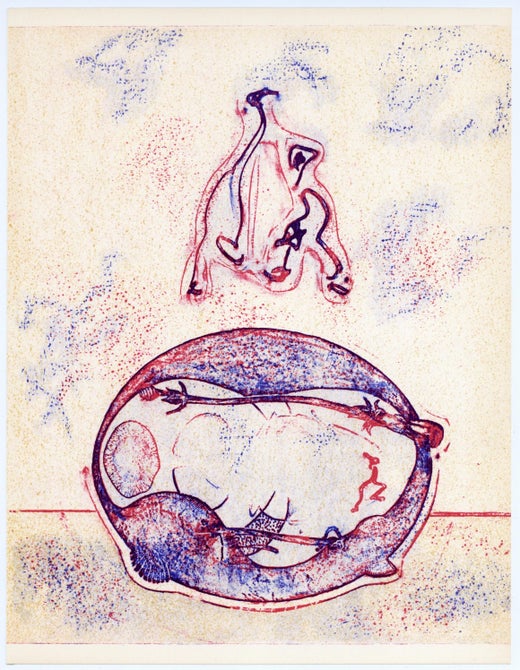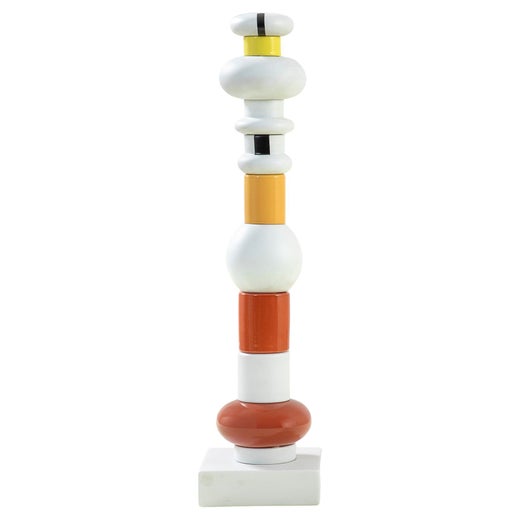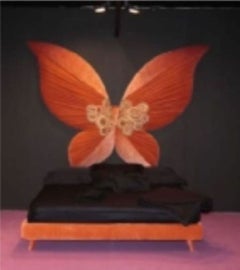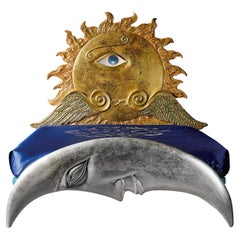Contemporary Art Bed - Gabbia by Max Ernst
About the Item
- Creator:
- Dimensions:Height: 102.37 in (260 cm)Width: 145.67 in (370 cm)Depth: 96.86 in (246 cm)
- Style:Other (Of the Period)
- Materials and Techniques:
- Place of Origin:
- Period:
- Date of Manufacture:Unknown
- Production Type:New & Custom(Limited Edition)
- Estimated Production Time:11-12 weeks
- Condition:Not pre-owned.
- Seller Location:Pistoia, IT
- Reference Number:Seller: FORMITALIA Group1stDibs: LU5745236230662
Max Ernst
Born in Germany in 1891, later naturalized as an American, then a French citizen, Max Ernst was a pioneer in the Dada and Surrealist movements, the boundaries of which he pushed with his unconventional methods of printmaking, drawing and collage.
Ernst had no formal art training — and that may have been his greatest asset. He produced his first work following four years serving in World War I. At the time, he was in Cologne, Germany, working closely with fellow Dada pioneers Jean Arp and Johannes Baargeld. His output during this period consisted largely of collages, which allowed him to represent the shards, rubble and explosions from his traumatic wartime experience.
In 1922, Ernst moved to France, where he soon became affiliated with Surrealism, the avant-garde art movement taking shape in Paris. Alongside Man Ray, Joan Miró and a couple of others, Ernst was among the first visual artists to experiment with imagery and techniques associated with Surrealism.
Ernst’s greatest contribution to the Surrealist movement was his invention of frottage (French for “rubbing”), wherein an artist rubs a pencil or crayon over a paper atop a textured surface, and later grattage (French for “scraping”), where a similar technique is applied with paint. Both methods showcase Ernst’s fascination with the unconscious and serendipitous elements of artistic creation, a theme that connected the Dadaists and the Surrealists. Ernst had deep knowledge of psychoanalysis and Sigmund Freud’s dream theories, which were big influences on Surrealists. He was among the first Surrealists to use Freud’s work to examine his own creative impulses. He also published a series of books of his collages, all of which were deeply symbolic and often philosophical.
When Germany occupied France during World War II, Ernst escaped to America with the help of patron and collector Peggy Guggenheim, whom he married in 1941. While living in New York, Ernst’s work and techniques proved instrumental in inspiring the early development of Abstract Expressionism — influencing Robert Motherwell and Jackson Pollock in particular. He later moved to Sedona, Arizona, where he lived with his fourth wife, Dorothea Tanning, a fellow Surrealist and prolific visual artist and poet.
While Ernst and Tanning are largely responsible for Sedona’s reputation as an artist colony, they relocated to France in the 1950s and remained until Ernst’s death in Paris in 1976.
Find original Max Ernst art on 1stDibs.
Mirabili
Known for its collaborations with some of the world’s most important artists, sculptors and designers, Italian furniture manufacturer Mirabili produces high-quality pieces that not only prioritize function but are also expressive objets d’art that are demonstrative of the company’s clear creative vision.
Famed Italian entrepreneur Sergio Cammilli (1920–2001), founder of radical modernist furniture company Poltronova in 1956, came up with an idea to focus on creating a collection of “usable furniture art” designed by notable architects and artists. In 1986, Cammilli’s vision was realized when he established Mirabili. He once explained that the company was a consortium of “well-known artists and designers selected for their particular gifts and their poetic world, lending an innovative and sensitive contribution to the cultural image of the habitat as ‘Art of Living.’”
Over the past few decades, Mirabili has attracted high-profile designers to create an eclectic range of pieces. For instance, the headboard of Italian multidisciplinary artist Luigi Ontani’s Heliondimio bed comprises a colossal carved wooden sun that is finished with gold leaf and “meets the gaze” of the carved crescent moon sculpture that appears on the foot of the structure. Other distinguished pieces include the leaf-like Foglia chair by Fabrizio Corneli, the TOTEM Clair de Lune sculpture by Ettore Sottsass, Carla Tolomeo’s Black Half-Moon silk and velvet sofa and Marco Lodola’s “playing card” contemporary art wall sculptures.
In 2002, Formitalia Luxury Group acquired Mirabili (now known as Mirabili Arte d'Abitare).
Mirabili has regularly exhibited at numerous art shows and fairs throughout Italy and the rest of Europe.
On 1stDibs, discover a range of vintage Mirabili decorative objects, wall decorations and seating.
- ShippingRetrieving quote...Shipping from: Pistoia, Italy
- Return Policy
More From This Seller
View All21st Century and Contemporary Italian Other Beds and Bed Frames
Wood, Resin
Vintage 1980s Italian Post-Modern Beds and Bed Frames
Silk
Vintage 1980s Italian Post-Modern Beds and Bed Frames
Silk
Vintage 1980s Italian Post-Modern Beds and Bed Frames
Wood
Vintage 1980s Italian Post-Modern Beds and Bed Frames
Wood
21st Century and Contemporary Italian Post-Modern Sofas
Bronze
You May Also Like
2010s Italian Post-Modern Beds and Bed Frames
Metal
2010s Polish Post-Modern Beds and Bed Frames
Brass
2010s Ukrainian Post-Modern Beds and Bed Frames
Textile, Rubber, Wood, Plywood
Vintage 1970s Italian Mid-Century Modern Beds and Bed Frames
Cotton, Linen, Velvet
2010s Polish Post-Modern Beds and Bed Frames
Steel
Mid-20th Century Italian Mid-Century Modern Beds and Bed Frames
Wood


